|
| |
Tokyo: June 26-29
Thur, Our plan is to spend several days in central Tokyo
getting reacquainted with the city. On the afternoon of our arrival, we explore
the area around our hotel, Four Seasons, in Ginza. We had dinner at a sukiyaki/shaba shaba
restaurant, Azumitei.
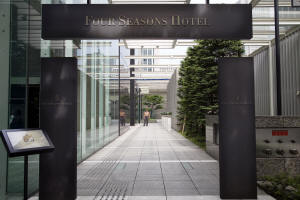
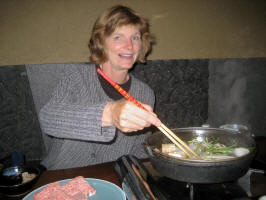
Fri, After a good nights sleep, we walk over to the Imperial
Palace. The Chinese tourists are visiting in large numbers.
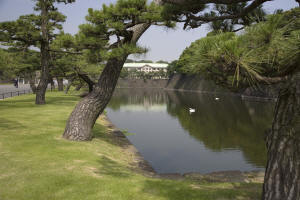
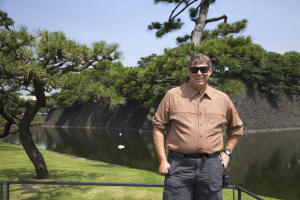
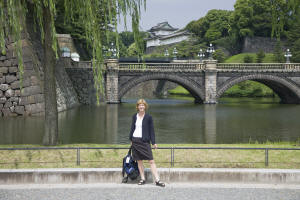
Here are two classic positions that we assume throughout the
trip. Jon is setting up his GPS so that we will not get lost.
Care is taking aim for more photos.
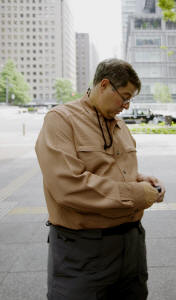
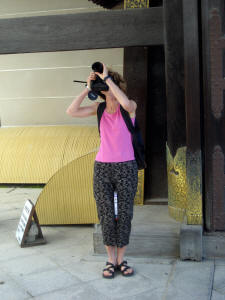
We walk on toward Akasaka, past the the National Theater, the
New Otani Hotel and to Toyokawa Inari Shrine. Red tori gates mark
the entrance to the grounds.
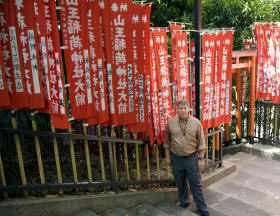
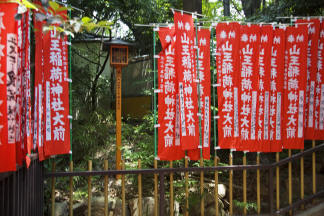
We continue on to the shinto shrine of Hie Jinja, where
a shinowa circle is erected for good luck.
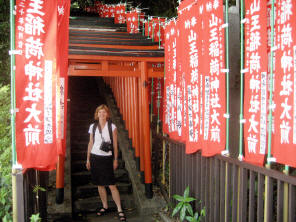
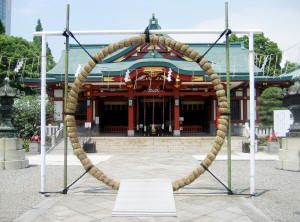
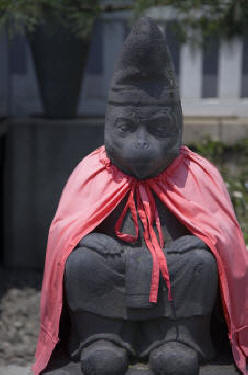
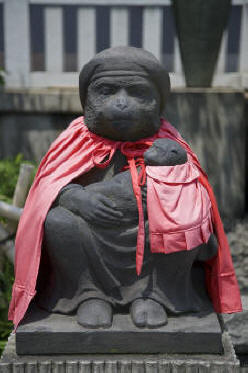
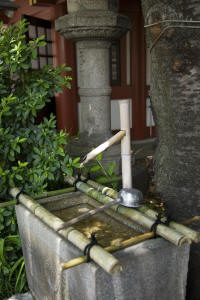
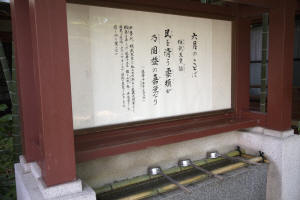
We walk on to the Roppongi Hills development and visit
the Mori Tower. The 54th floor is an open observation deck affording 360
degree views of the city. We stop for a sushi lunch at Raku-Raku in the
Grand Hyatt.
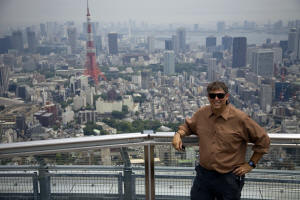
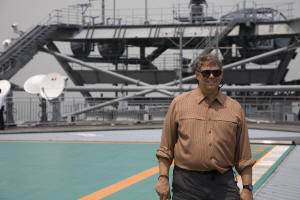
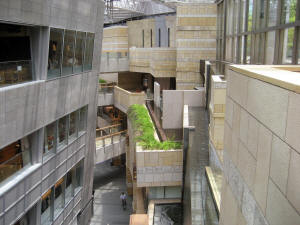
We continued our walk through the Aoyama Cemetery and west to
the Omotesando Hills, a hang-out for young people and shoppers. We
strolled through the Meiji grounds and temple before taking a subway back to the hotel. We
enjoyed dinner at Inakaya, a robatayi style restaurant in Ginza.
Sat. We back track to the Imperial Gardens East since they
were closed the other day. On our way back to Ginza, we walked through the Toyko
International Forum where a trade show and conference was in full swing.
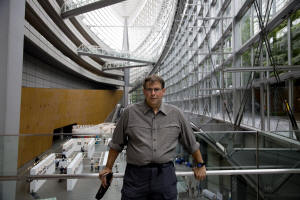
We wandered around Ginza looking for Tenichi restaurant,
reminiscent of Jon's parents' favorite restaurant many years ago.
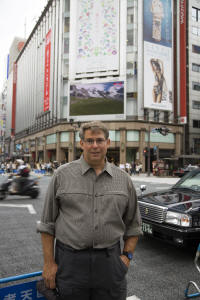
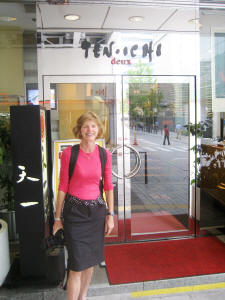
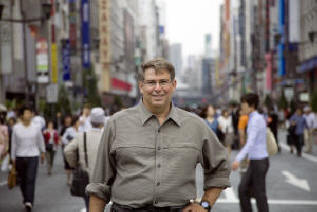
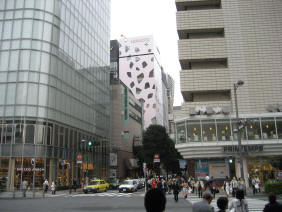
After lunch, we headed over to the Tsukiji Fish and Central
Market area. Along the way we passed the Kabuki-za Theater. The fish
market was quiet mid day with a few fish mongers still at work. We walk
through the Namiyoke Inari Jinja, the fishermen and traders' shrine.
We dine at Ichiwa, a yakatori restaurant while watching chicken prepared in all
sorts of edible dishes.
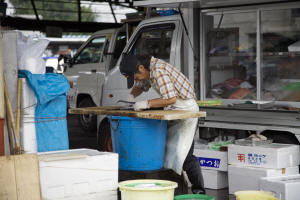
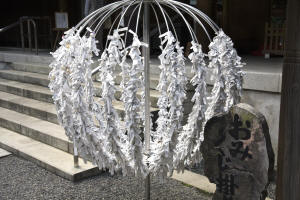
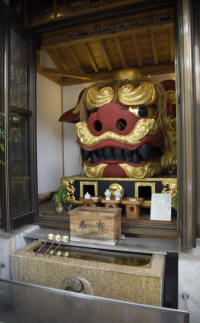
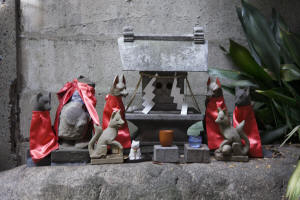
Kyoto: June 29- July 2
Sun, rainy. Today we take the
train to Kyoto. From the the Kyoto Station it is a short drive to our
ryokan, Tawaraya. The Tawaraya is one of the oldest ryokan's in Japan and has
been owned by the same family for 11 generations. A list of notables
have stayed in the ryokan and we were honored to share the traditional
experience.
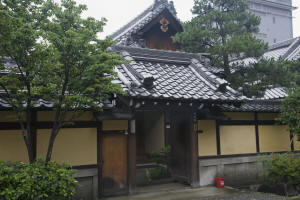
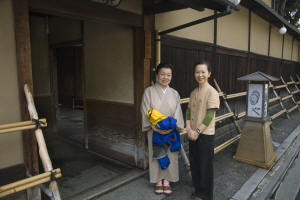
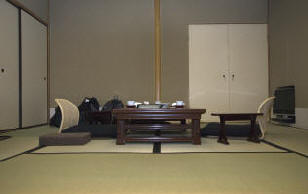
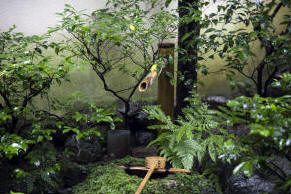
Our suite consisted of an 8 tatami room, "Kotobuki", where we ate, slept and
lounged. Very simple yet very elegantly styled. Our room opened on to a
small porch and private garden. The bath consisted of a cedar steam tub with shower.
The Japanese have perfected the toilet with all the bells and whistles: music, heated seat, sprayed water
and air jets, perfume/disinfectant puffs etc. Shoji screens gave way to
glass windows in order to accommodate the use of central air conditioning.
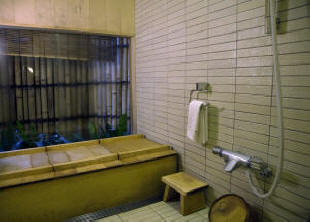
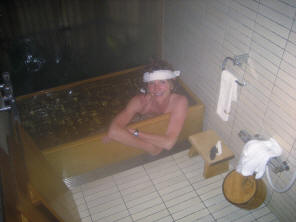
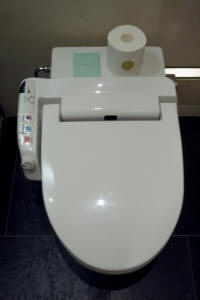
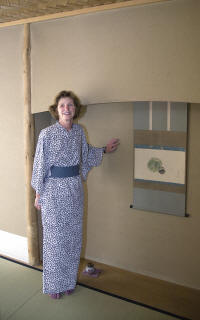
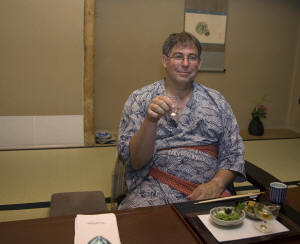
We were outfitted with a fresh yukata and obi daily.
Since shoes are not to be worn on the tatami mats, we had tabi socks and sandals
for the room. The toilet had a separate set of shoes for use only in that
room.
After a hot bath, we donned our yukatas for our first dinner.
We
enjoyed a traditional Kaiseki dinner (8-courses). In no time, our
bed was set up where we had just finished dinner. We also experienced
brazier cooking of a beef dinner our last
evening.
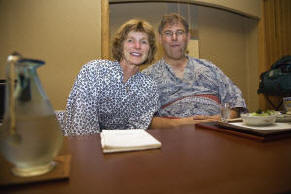
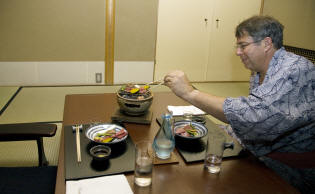
Mon, clear and warm. We were up early. The ryokan
does not mess around with late sleepers. My traditional breakfasts were not
complete without some sort of cooked fish - Jon stuck to scrambled eggs.
By 8:30am, we are on the streets walking to the Nijo Castle and Shinsen -en
Garden. We view the grounds and buildings' exteriors first before viewing
the ornate interior spaces and the "nightingale" floors that sing with movement.
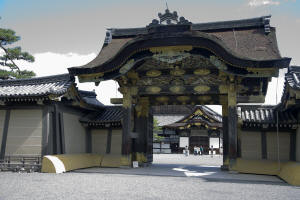
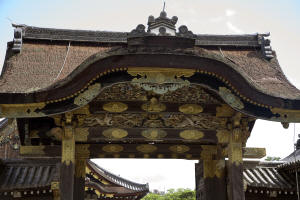
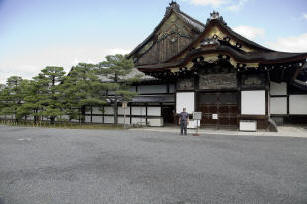
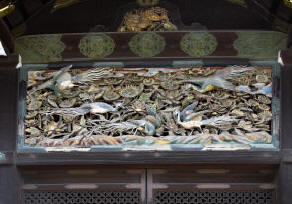
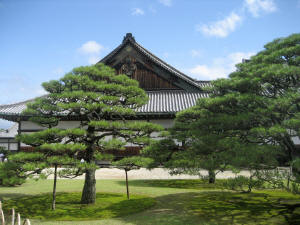
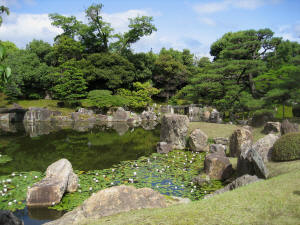
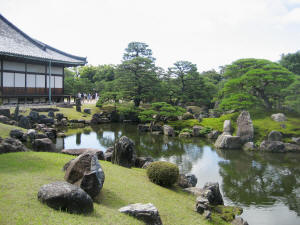
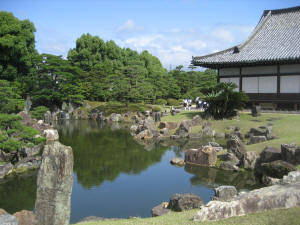
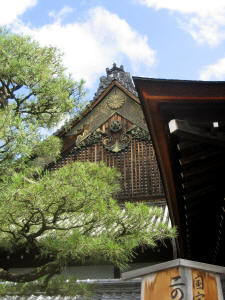
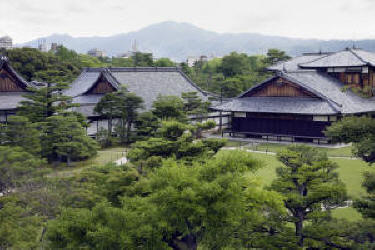
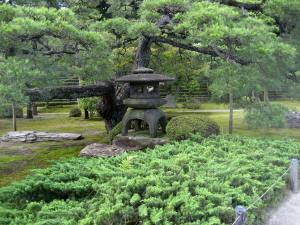
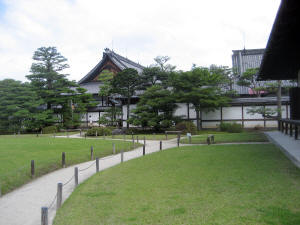
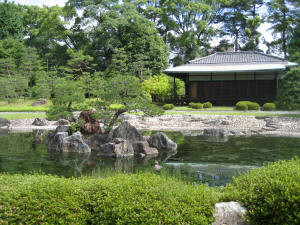
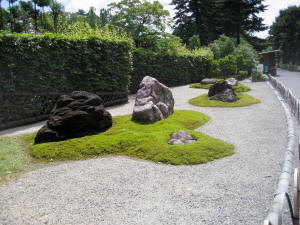
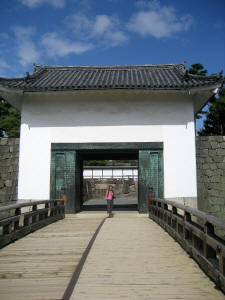
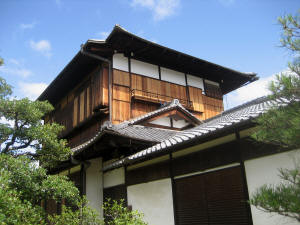
From Nijo, we walk toward the Imperial Palace and on toward
the Kamo River. We watch a group of school children learning to fish. We
walk along Pontocho Alley which looks like it is a very lively district during
the evening hours.
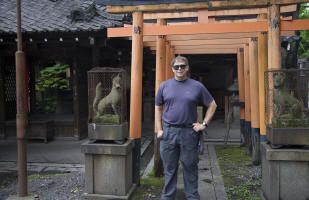
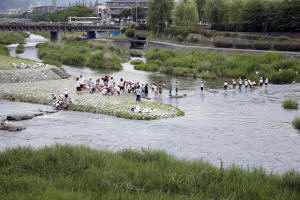
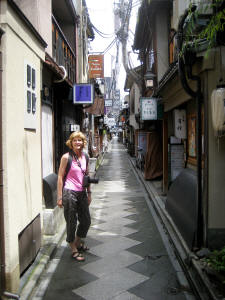
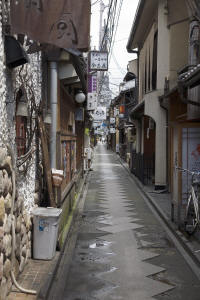
We walk toward the Gion district (geisha quarter) and enter
the 2 story gateway to the Yasada Shrine.
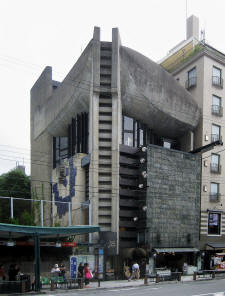
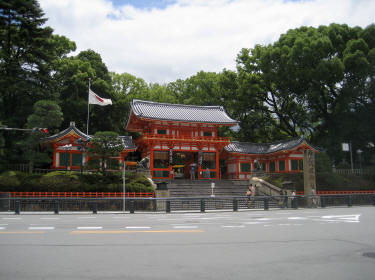
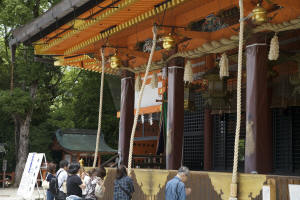
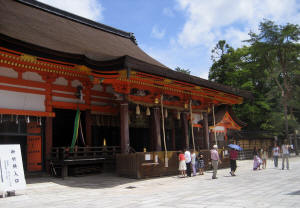
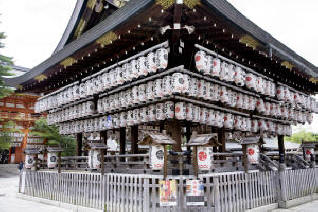
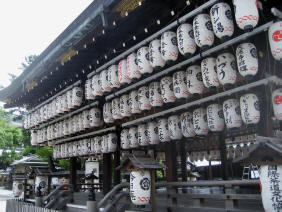
We walk up to Ne-n no Michi and
enjoy looking at the shops and galleries. We enter the Kodai-ji, built for the
widow of Toyotomi Hideyoshi.
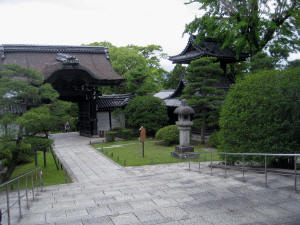
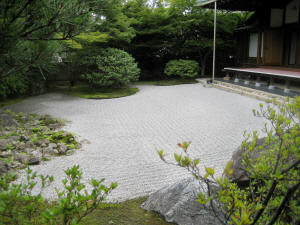
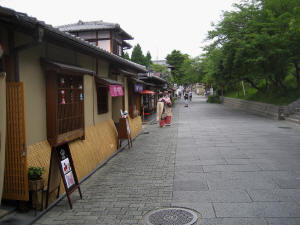
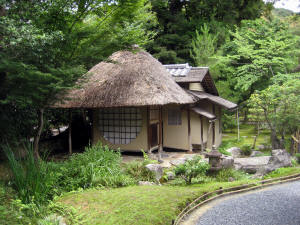
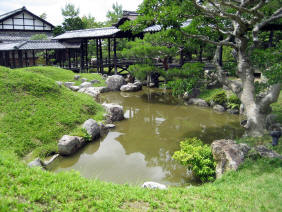
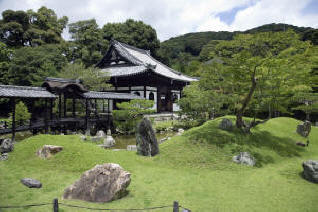
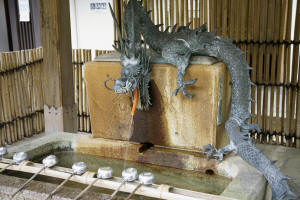
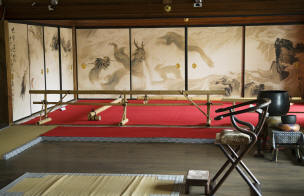
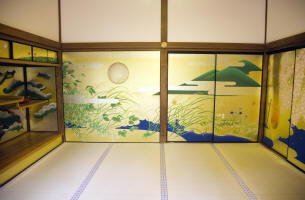
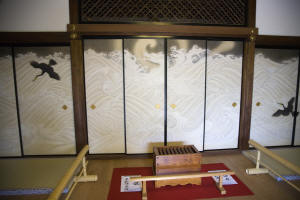
Off of Ishibe-Koji Lane, we slip into a little cafe for a
buffet lunch. It turns out we have joined the pickle express lunch
(pickles, a bowl of rice, tea and a block of tofu). We meander on to
Kiyomizu Temple and admire the view from its vistas. The tourists and
school groups have caught up to us by afternoon.

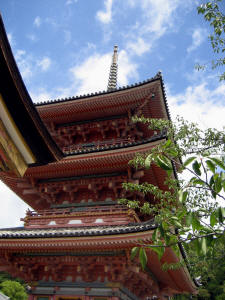
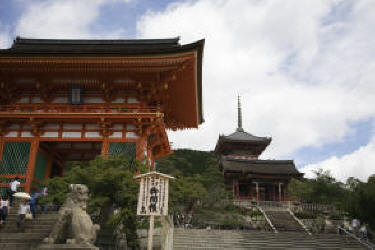
We return to Yasaka Shrine and go north to view the Choin-in
Buddhist Temple and giant bell.
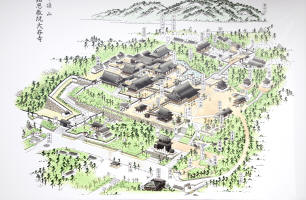
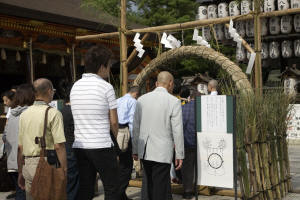
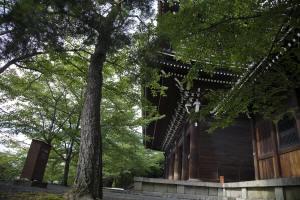
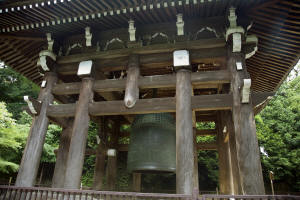
Tues, Public Transportation Day. With a lot of ground to cover, we
descend into the subway to take us north for the Philosopher's Walk along the
Eastern Mountains between Ginkaku-ji to Nyakuoji-jinja and Nanzen-ji. Our
first stop is the Silver Pavilion (Ginkaku-ji), built for shogun Yoshimasa, and
renown for its unequaled garden design. The Pavilion itself was undergoing
renovation. The grounds are manicured by the skilled hands of gardeners
using ancient hand tools ie. broom.
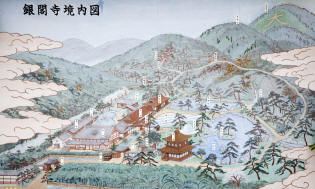
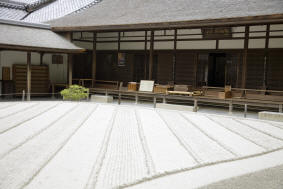
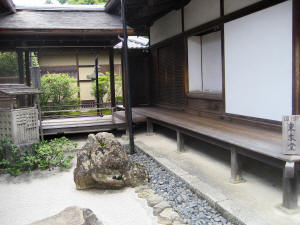
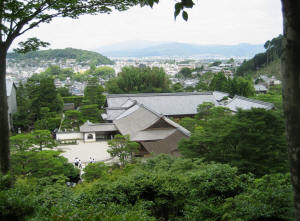
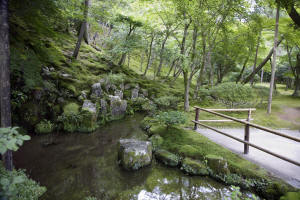
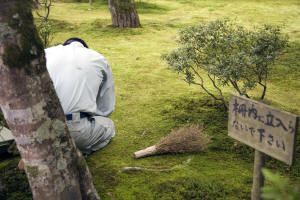
As we walked along the tree lined canal, we rested in this small temple
courtyard.
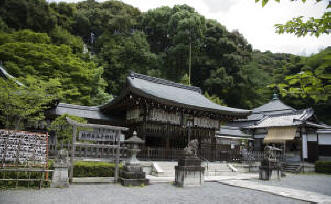
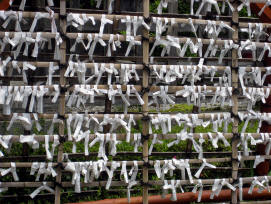
At Nanzen-ji, the Zen temple date from 17th Century sits with its
Western-style Meiji period (1890) aqueduct.
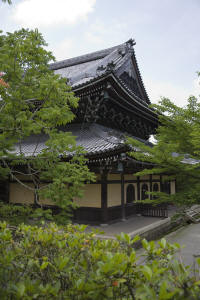
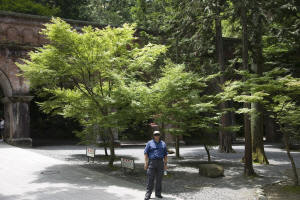
Upon completing this creekside walk, we hop a subway back to central Kyoto.
Our lunch is in a very old family mansion, Kishwashi, that has been converted
into a chicken grill.
By bus we travel to the northwest side of the city. At the end of the
line, we arrive at the Ryoan-ji Temple. Here we view the famous garden of
gravel and 15 rocks, not all of which one is able to observe from a single
angle. It is considered the ultimate Zen Buddhism expression dedicated to
meditation. The grounds are covered with moss and large canopies of
copious maple leaves of miniature scale complemented by a lower pond garden.
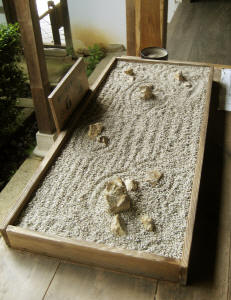
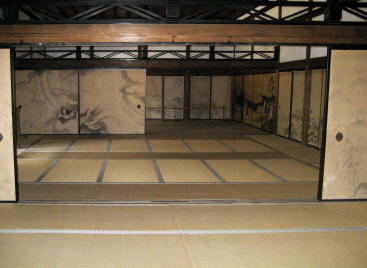
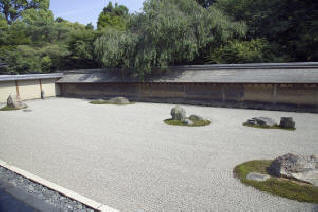
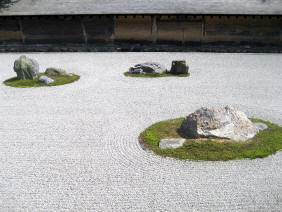
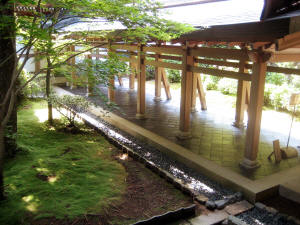
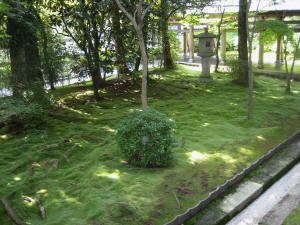
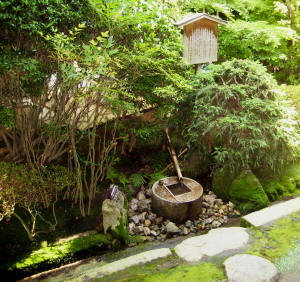
From there, we walk down the hill to the Golden Pavilion, Kinkaku-ji,
or more formally known as Rokuon-ji Temple, built
as the retirement home of Yoshimitsu, third Ashikaga shogun and replicated in
1950 after destroyed by fire. The pavilion is covered in gold leaf with Mt
Kinugasa as its backdrop.
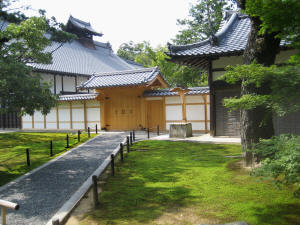
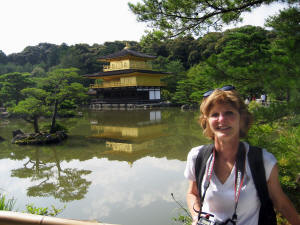
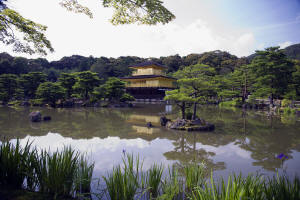
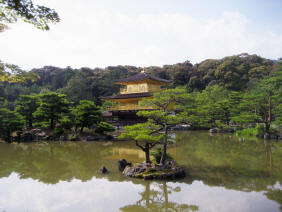
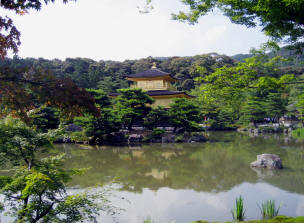
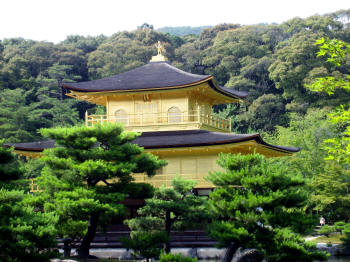
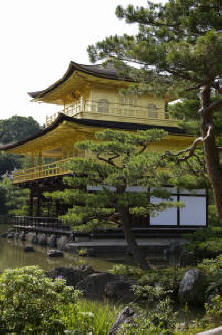
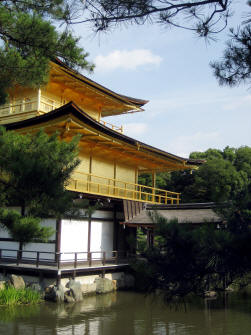
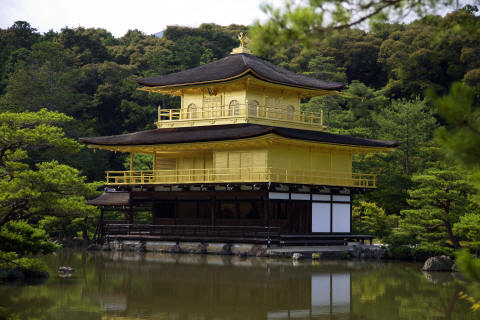
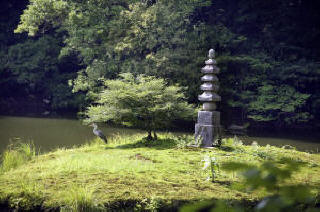
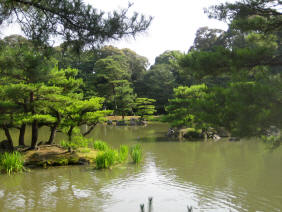
Some local color observed along the way...
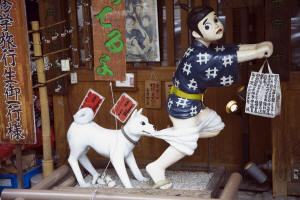
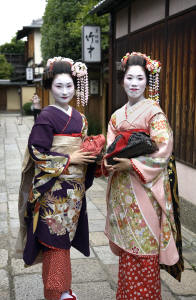
We return to the central city by bus for our last dinner at the ryokan before
heading to Thailand.
On to the Golden Triangle -
Thailand and Burma
|





